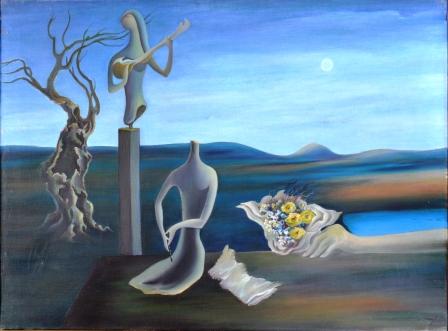 The humble waves of Dikhow merged with the Brahmaputra, and together they flowed into the sea, meandering through rugged terrains after a long, arduous journey. That was how Hemanta Misra’s life too moved on, from his childhood at Sivasagar to the days of vibrant energy in Guwahati, before it became one with the wide creative confluence of Kolkata.
The humble waves of Dikhow merged with the Brahmaputra, and together they flowed into the sea, meandering through rugged terrains after a long, arduous journey. That was how Hemanta Misra’s life too moved on, from his childhood at Sivasagar to the days of vibrant energy in Guwahati, before it became one with the wide creative confluence of Kolkata.
Nothing describes the entire life of Hemanta Misra better than this, and when he drew this parallel in his autobiography Dikhow Luit Aru Hkhagar, the legendary artist was not alluding to his gradual voyage alone. For, his journey of life was one of innumerable struggles and hardships, just like the river’s rocky path that lies beneath the apparent serenity.
The title sums up Misra’s artistic journey as well, for his oeuvre comprises three distinct categories. The recent exhibition at the State Art Gallery, Rabindra Bhawan, a privilege for all art lovers, had works of these three significant phases of his career.
Born in 1917 and educated in Cotton College and St Edmands College, Misra’s works done during the days in Guwahati and Shillong were largely impressionistic in nature. Misra had to learn art through a correspondence course under John Hassall of England, for in those days there was no art school in Assam, nor any artist to look up to. Learning art this way was never easy, but the academic training was good enough for a start. Thanks to his indomitable spirit and relentless efforts, Misra could apply the lessons to hone his skills. His drawings and sketches, done in quick time, had remarkable strength. The paintings captured the beauty of Assam and Shillong and the simple life of the masses, and though at times the influence of Van Gogh was obvious, it seemed more like a tribute to a legend rather than imitation, for his individuality was evident.
In the second phase, his works leaned towards cubism – not in a Picassoesque manner, but in an individual style that allowed him to decorate his canvases with patterns and linear movements with the play of colours and light-and-shade creating a poetic air. It was a blend of some characteristics of the Western style with the mystique of Indian colours and rhythmic lines. That was the time he held his first ever one-man show in Kolkata, in 1952, which earned rave reviews. Soon afterwards, the famous Calcutta Group embraced him as one of its members, so impressed it was with the powerful drawing Misra was blessed with. The group is credited with paving the way for modernism in Indian art.
Misra continued in this style for seven years, and the year 1959 marked the beginning of his career’s most significant phase. Deviating from cubist expressionism, Misra tended to explore the realm of surrealism and became one of the protagonists of the movement in India, along with KCS Paniker and KC Pyne. By 1970, the Indian surrealism became strong enough with contributions of the likes of J Swaminathan, Jaswant Singh, Bikash Bhattacharjee, Ganesh Pyne, etc. Misra’s works of this phase remind us of none other than the great Salvador Dali. He was indeed influenced by surrealism, but his taking recourse to this mode of expression was necessitated rather by an urge to give pictorial shape to images and feelings flowing out of the subconscious. That is what gave his works the fragrance of individuality. Misra created a mystical atmosphere with the magical play of light and shade, surreal colours around areas of eerie calmness, dream imageries and their strange distribution. Works like Echo of a Song and Cracked Mirror had a soothing lyrical quality, much like Dali’s melting watches in The Persistence of Memory. His art was silent poetry at its best, where the tenderness of moonlight blended with a revolutionary urge.
Nonagenarian Misra’s greatest contribution was putting Assam on the map of Indian art during the last five decades; but unfortunately this worthy son of the soil never got his due. This retrospective exhibition, however, reminded us of his genius and contributions. Assam Fine Arts and Crafts Society and Gauhati Artists’ Guild deserve high appreciation for making it possible, in a way that matched Misra’s magnificence.